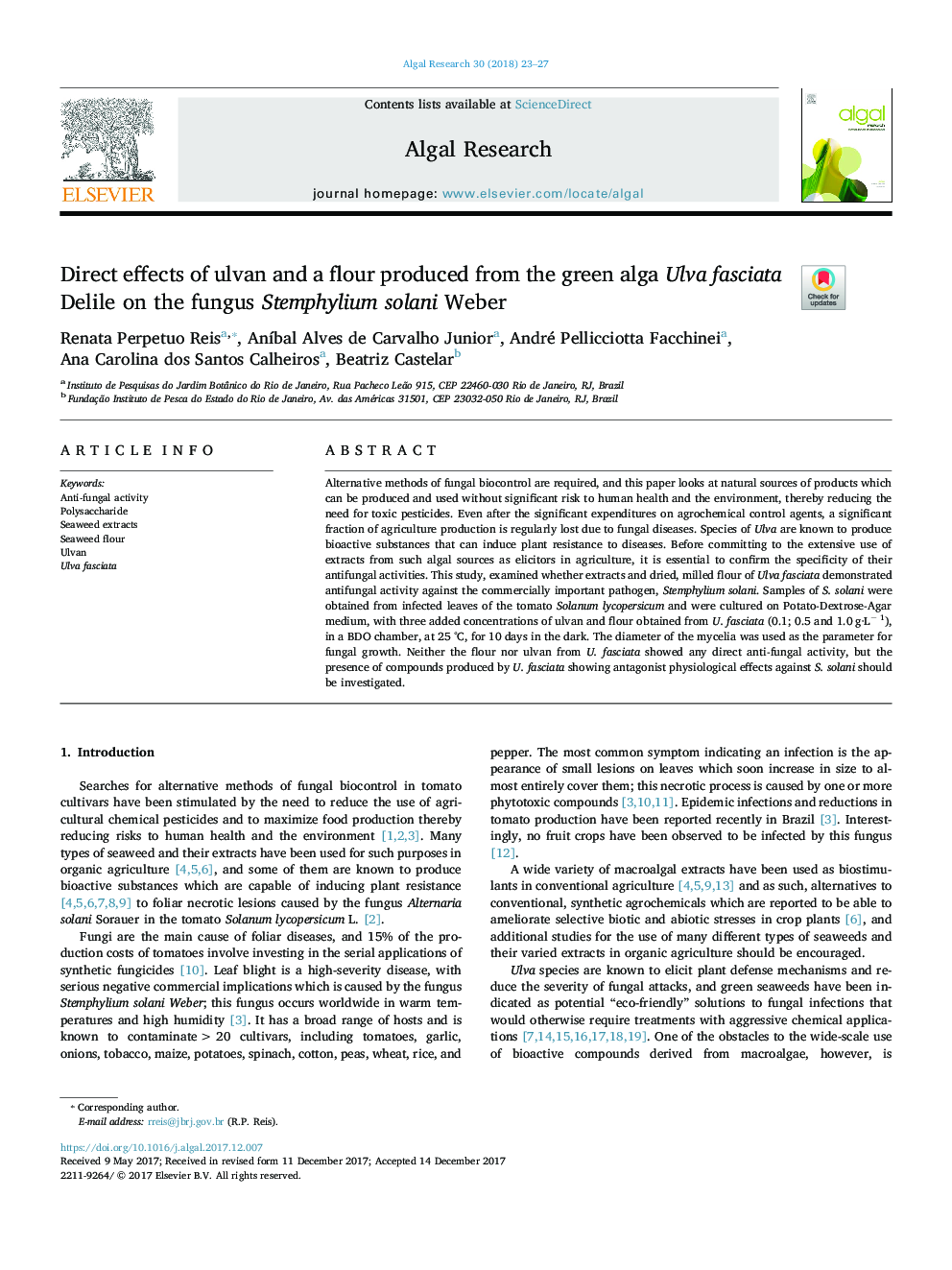| Article ID | Journal | Published Year | Pages | File Type |
|---|---|---|---|---|
| 8086117 | Algal Research | 2018 | 5 Pages |
Abstract
Alternative methods of fungal biocontrol are required, and this paper looks at natural sources of products which can be produced and used without significant risk to human health and the environment, thereby reducing the need for toxic pesticides. Even after the significant expenditures on agrochemical control agents, a significant fraction of agriculture production is regularly lost due to fungal diseases. Species of Ulva are known to produce bioactive substances that can induce plant resistance to diseases. Before committing to the extensive use of extracts from such algal sources as elicitors in agriculture, it is essential to confirm the specificity of their antifungal activities. This study, examined whether extracts and dried, milled flour of Ulva fasciata demonstrated antifungal activity against the commercially important pathogen, Stemphylium solani. Samples of S. solani were obtained from infected leaves of the tomato Solanum lycopersicum and were cultured on Potato-Dextrose-Agar medium, with three added concentrations of ulvan and flour obtained from U. fasciata (0.1; 0.5 and 1.0 g·Lâ 1), in a BDO chamber, at 25 °C, for 10 days in the dark. The diameter of the mycelia was used as the parameter for fungal growth. Neither the flour nor ulvan from U. fasciata showed any direct anti-fungal activity, but the presence of compounds produced by U. fasciata showing antagonist physiological effects against S. solani should be investigated.
Related Topics
Physical Sciences and Engineering
Energy
Renewable Energy, Sustainability and the Environment
Authors
Renata Perpetuo Reis, AnÃbal Alves de Carvalho Junior, André Pellicciotta Facchinei, Ana Carolina dos Santos Calheiros, Beatriz Castelar,
